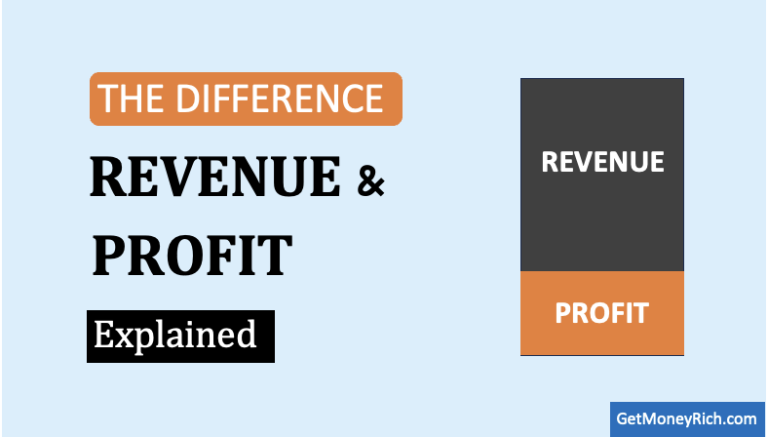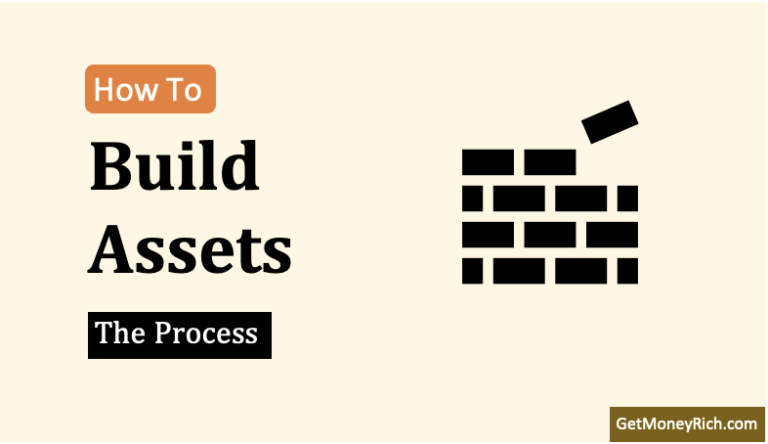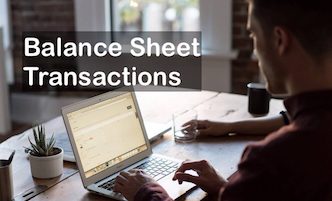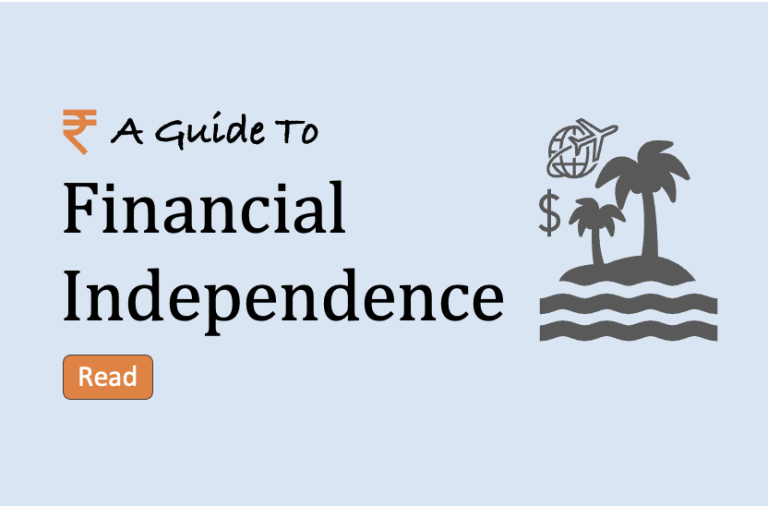What is the utility of a balance sheet for individual? Why a salaried employee must maintain a personal balance sheet?
There can be no if’s and but’s in the answer. An individual must maintain a balance sheet for personal use. Why?
Because it will assist in keeping ones personal finance in order.
What is a personal balance sheet?
Though I’m referring it as a ‘balance sheet’, but actually it is a combination of two reports in one: (1) Cash Flow Report and (2) Balance Sheet.
Let’s see a schematic representation of my personal balance sheet.

This diagram highlights the main constituents of a personal balance sheet suitable for an individual:
Cash FLOW REPORT
- Income: For an average person, there can be two source income: (a) salary & (b) alternative Income. Salary comes from doing a job/business. Alternative income can be generated from savings and investments. Read more about building an alternative income source.
- Expense: The expense side of cash flow report is basically an “expense budget“. First, it lists down all possible expense line items. Secondly, it quantifies all expenses to fix their budget. Finally, it balances the income with the budgeted expenses. Target is: Income must equal expenses. Read more about 50-30-20 rule of budgeting.
Balance Sheet
- Asset: The income shown in cash flow report is used to manage expenses. There can be two type of expenses: (1) Assets Purchase, & (2) Liabilities Purchase. In the asset side of balance sheet, the current market value all assets purchases by an individual is recorded. Read more about how to build assets.
- Liability Savings: In traditional balance sheets of companies, the term uses in “Liability”. But in balance sheet for individuals, a better phrase will be “Liability Savings”. What is liability savings? I have considered all expense which are not used to buy assets as a liability. To manage these liability, savings must be maintained. These savings in turn will take care of all the budgeted expenses. Read more about tracking expense in excel.
How money flows in personal balance sheet?
Why this is important to know? Because if can we channelize the flow of money correctly, our financial goals can be met sooner.
So, let’s visualise the flow of money:

income is coming from where?
- 1.1 Income from Job: Here the flow of money is in the form of salary. People do a job and in turn are compensated by a paycheck. Majority individuals in this world earn money this way. Hence I thought to use this an an example in my personal balance sheet format. Though, ‘income from job’ can be easily replaced by ‘income from business’. Read more on how to reduce salary dependency.
- 1.2 Income from Asset: All assets generate ‘returns’, but not all of them can generate ‘regular income’. The term ‘income’ used in the personal balance sheet refers to a ‘regular income’. Out of the total investment portfolio, there must be some assets which can generate ‘regular income’. Read more about what Kiyosaki says about investment income.
Where the income is going?
- 2.1 To Buy Assets: A portion of income is used to buy assets. It can buy stocks, mutual funds, monthly income plans, retirement plans, cash savings etc. These assets in turn does three things for an individual: (a) It yields fast capital appreciation, or (b) it also yields income, or (c) it builds a cash savings for future use. Income generated from assets has been named as “other income”. The ‘cash savings’ is used to take care of ‘unconfirmed future expenses’ (check the balance sheet template shown below). [P.Note: The bigger is the asset base, higher is the “other income”]. Read more about financial literacy the Kiyosaki’s and Dave Ramsey’s way.
- 2.2 To Build Liability Linked Savings: A portion of income is used to build savings to manage liabilities of life. Which are these liabilities? Anything which is causing the individual to expend money is a liability (except when the money is used to buy assets). Example of such liabilities are utility bills, health expense, loan payments, shopping etc. Read more about how to achieve financial independence in stages.
Utility of Liability Linked Savings
In #2.1 #2.2 above, we have seen that a portion of income was to buy assets, and balance is used to build “Liability Linked Savings”.

What is the use of liability linked savings?
They feed all the expense requirements of life for the individual.
The important point to note here is that, the income of individual is never used directly to manage expenses of life. To reach expense, it must follow this path: Income > Liability Savings > Expense.
Balance sheet for Individual: Tailor made for a salaried employee
How it does its job? It simply asks an individual to maintain a record of few things. What are those things?
- Identifying expense heads.
- Establishing a budget.
- Recording all income and expense.
- Generating a report.
- Studying the report.
This looks like a lot of hassle, right? But do not worry, once done, it comes with a host of benefits.
In the beginning it may look cumbersome, but over time its utility will be exceptional. It has powers to change ones personal finance conditions dramatically.
Just start the process as part of your personal discipline. Like you take care of your health, use the balance sheet format to take care of your financial health.
Effectiveness of a personal balance sheet
I can vouch for its effectiveness? How? Because we are not the ones who are going to use it for the first time. Companies as a rule use similar reports to manage their finances.
The financial reports that companies maintain are:
- Balance sheet.
- Profit & Loss Account.
- Cash flow statement.
You must be already wondering why they do so much effort to prepare all these reports.
There are two reasons:
- It is part of a good business practice (good habit).
- It keeps their finances in order.
Anything which is part of a good habit, and also benefits the user, can be followed almost blindfolded.
Ask a common man who runs a marathon as a hobby, “why he takes so much pain?”. His answer will be – he loves to do it and moreover it keeps one fit.
Maintaining a personal balance sheet format for self is like Marathon Running. Till one has not started, it will look like “impossible to do”. But with time, it has powers to change lifes.
Getting Organised…
I always wanted my personal finance to be more organised.
At least I wanted to start a process, of managing money.
Simply earning and then immediately spending was not helping. There must be a plan which must dictate the following:
- How we earn money?
- How we spend money?
How to build a plan? Have your own personal balance sheet in Excel.
Earlier, I never bothered to record my income & expenses. Preparation of personal balance sheet never came to my thought. But when organising my finances became priority, everything seems to start making sense.
How I did it? Analysis of the following must be done to get ones personal finance in order:
- Income,
- Expense,
- Assets & Liabilities.
Hence I prepared personal balance sheet for myself. My personal balance sheet was in a simple MS Excel format. I have shared the screenshots of what my balance sheet format looks like.
I will suggest you to take a clue from it and prepare one for yourself.
Be assured, you will enjoy the proceedings. Moreover, always keep this in mind that what you are preparing is going to change your life for good.
insight into my personal balance sheet
The template in excel format was very useful in managing my personal finances. Day to day transactions are updated in excel. I have been maintaining this excel format for almost a decade now. In the course of these past years, I have made several changes in the template.
A personal balance sheet has roots in the following:
- Preparation of Cash Flow Statement (I like calling it cash balance).
- Recording of all expense (Cash-out).
- Recording of all income (Cash-in).
- Linking income with asset-base.
- Linking expense with ‘Liability savings’.
Step one of my balance sheet starts from the preparation of cash flow statement. Idea is to visualise, which expense is consuming how must income.
Why it is called cash balance? Because it satisfies this equation: All Expense equals All Income.
In this article we will see a template in excel of a personal balance sheet.
There are two parts of my balance sheet:
- A. Cash Flow Report.
- B. Balance Sheet.
#A. Cash Flow (cash balance) in Excel:

This cash balance (cash flow) statement helps to balance income and expense.The concept of cash balance says, we can spend on things only in two conditions:
- If our savings can fund the purchase.
- If our income stream can fund the purchase.
What means by income stream? People earns money. But all money does not come in hand at a time. It comes in phases.
Example:
- Annual Salary : $100.
- Monthly Component : $7 (7×12=84).
- Annual Component : $16
- Total : $100
What does it mean? One must plan the expenses (cash-out) in a way which compliments the “savings and income stream (cash-in)”.
Even if the income is high, but cash flow each month is poor, the person cannot commit to high monthly expenses.
Similarly, even if the income is high, but savings is inadequate, the person must think twice before spending.
#A.1 Cash balance helps to stop overspending
It is common, people tend to overspend a lot. This happens because we do not realise that we are overspending.
Why this happens? Because people are not aware of their “Cash Flow”. Cash balance report helps people realise what they can afford and what they cannot. [P.Read: Article on overspending which also has a personal finance calculator]
How to know this?
- Step 1 – Check if you have enough savings.
- Step 2 – Check if your income stream can help you purchase your thing.
Ideally, all purchases must be done from the accumulated savings. Forget about your next paycheck. Try to purchase everything from your savings. Use your income stream to build savings, and not to support your expenses. This way there is a cent per cent chance that, overspending will not be allowed to creep in.
- Example1: Suppose, you desperately want to buy a Apple MacBook (Rs.75,000). When you checked your cash balance statement (Miscellaneous Shopping), you found that you only had Rs.48,500 as savings on this head (see the above screenshot). This is a clear hint that, at present you cannot afford to buy this MacBook. Either you will have to wait, or will buy a cheaper Windows based laptop.
- Example 2: Suppose you are required to pay school fee of your child semi-annually. Semi annual fee is Rs 24,000. When you checked your cash balance statement (School Fees of Child), you found that you have Rs.28,000 as savings on this head (see the above screenshot). This mean, you have saved well to fund this expense.
#B. Balance sheet: Asset-Liability vs income-expense balance

My cash flow report helped me to prepare other personal financial report as well. This is where the real utility of personal financial statements can be seen. When we see all three financial statements together, it helps us realise many things. But before we go into analysing mode, let’s see how to prepare our personal balance sheet.
All translations those are recorded in cash-flow statement can be categorised and organised in following heads:
- Income
- Expense
- Asset
- Liability
My personal cash-flow statement has been categorised like this. Its template in excel format looks like this I have been personally using these sheets since last 6 years. It gave me great realisation and awareness about my money flows.
Experts may say that the sheets I have shown are not strictly correct representation of financial statements. But it has worked for me. The logic based on which I have categorised assets and liabilities can be debatable. But this simple logic has made me see that side of money management that I could not have seen otherwise.
Important is to categorise all expenses as:
- Contributing to build an asset (savings, investments),
- Contributing to support a liability (bills, EMI’s, etc).
The logic that goes behind categorising expenses is like this:
- Assets add money to our pockets.
- Liabilities takes money out of our pockets.
#B.1 How to read the balance sheet?
One glance at your balance sheet and income/expense statement should make the following this clear:
- Which expenses are contributing to “Asset” building.
- Which expenses are contributing to support “Liability”.
- Which are the sources of income – Cash-ins (salary, others etc)
- On which head, the spending is most.
- How much is being saved and invested.
- What is ones Net Worth (Asset – Liability) as on date.
#B.2 Real life understanding of assets and liabilities
- How to treat your home in which you live? Suppose you bought a home for rental income. You took home loan. The monthly EMI payments will be one sure expense. But does the market value of property will go in “Asset” column? Yes and no. Yes – when Rental income minus EMI is positive. No – when Rental income minus EMI is negative. In majority cases, our rental income minus EMI will be negative. Hence, the property shall not be listed in Asset Column. Remember: An asset must add money to your pocket. It it is not doing this, it is a liability. Though it is atypical case where one day this liability will become an asset.
- How to treat your vehicle? You may have multiple vehicles, but do not added them in you asset column. Vehicle only add to expenses. Hence it is a big liability.
- How to treat furnitures and gadgets? Do not add furniture’s, Television, Kitchen Set, Dining Set, Fridge, Gadgets etc in asset column. None of these items creates income. These items are all like sitting ducks doing nothing for my personal income generation. Traditional accounting rules tells us that these (house, vehicle, furnitures etc) are our assets. But Robert Kiyosaki suggests to define assets as one which generates regular income. Though it is a very stringent way to define assets, but for ones personal finance this theory works like a magic.
Conclusion
It is very important to have a balance sheet format for individual in excel. It allows people to organise their money-flow. It also let people visualise their Net Worth (Asset – Liability). You might be surprised to note this fact that, majority of us have a net worth in negative.
Apply the below theory to your life and see if your net worth in positive or not:
- Identify assets.
- Identify Liabilities.
- Calculate Net Worth (Asset – Liability).
If your current Net worth is negative, it is high time to create one personal balance sheet format for yourself.







Sir,
your writing is great. This is what I was looking for. You have fulfilled it. I could not make the excel of the (A.) Cash flow and ( B.) Balance sheet ,mentioned in your article, can you share those two excel sheets? Thank you very much.
wow, just amazing. I never thought money management can be this easy. Thanks (Y)
Hey Mani,
Your information is useful and with your format I am maintaining my personal balance sheet with no trouble. Thank you.
Great! Thanks for posting.
Your blog actually doesn’t helps much as it does not provide the excel sheet. It is all theory but nothing to do the workout on. Such theories are available in so many books. Please provide the excelsheet download also.
I’m sorry to disappoint you. Thanks for your feedback.
Hey Many…Your blog is nice and some points are quite eye catching. Anyhow, please let me know from your side about non performing assets and their listings in Balance sheet.
1. Suppose we have purchased a land and at present it may not generate passive income but its value may appreciate over a period of time ( say 5 years). In this case can we add Land in asset as non performing asset? If yes, what is the ideal appreciation rate to be reported. If not, how to deal it.
2. Some stocks are in break even condition ( flat trend) over a period of time and also not paying any dividends. In this case it is also a non performing asset. How to deal with this in our Balance sheet.
I would like to make one important submission for your kind information.
I read your most of the blogs but one thing is missing. I thought this is very important as it is linked to ones personal finance strategy and human emotions.
According to Robert Kiyosaki, our primary focus should be to add as much as assets ( performing/non performing) to our asset coloum. Over a period of time passive income will come as a by product. However, the delay in generation of sufficient passive income shall result in delay our financial independence.
This statement is quite encouraging motivating to investors.. Right?
Looking forward to hearing from you soon.